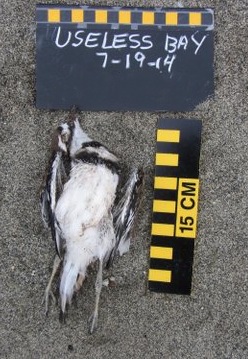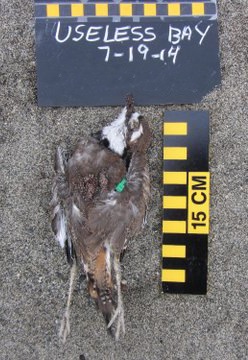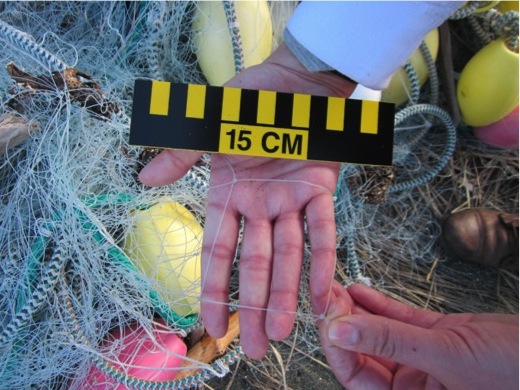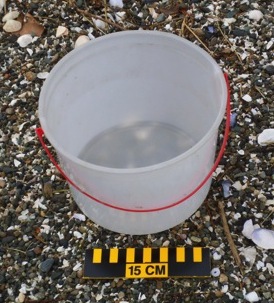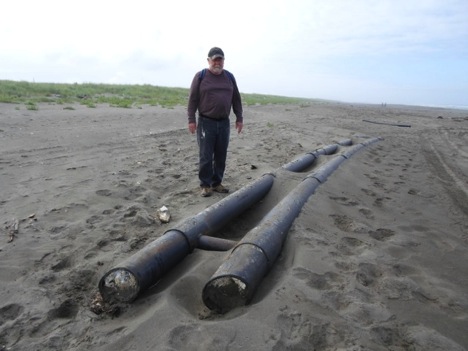August is off to a great start! We’ve had wonderful conversations with many of you this week during our summer check-ins, we are excited for a Beached Birds Refresher in Neah Bay on August 16, and we are getting ready for our very first Marine Debris Pilot Training in Ocean Shores on August 23! If you are looking for something to do this weekend, note that this is the last really good low tide series in daylight – a perfect time to conduct a sea star survey at a local rocky beach. Check out the volunteer toolbox to find the COASST protocol and datasheets.
Thank you for all of your hard work this month! Let’s take at what’s washed in to COASST beaches recently:
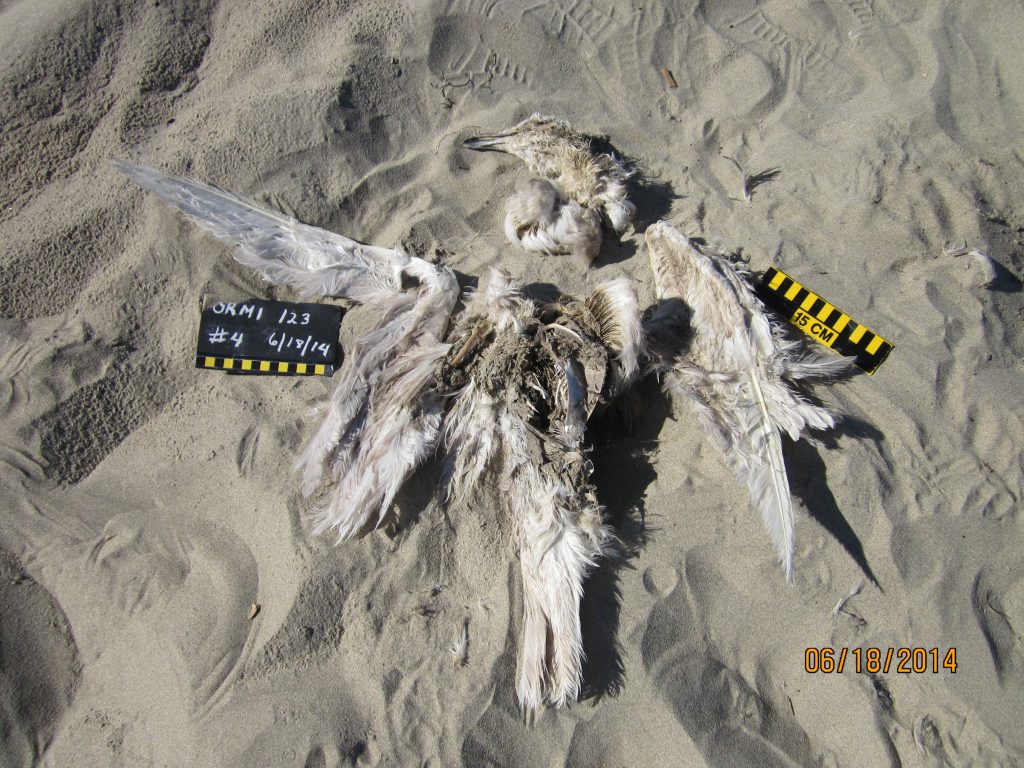
Carol found this bird at Bastendorff Beach in Oregon on June 18th.
Bill: 63 mm, Wing: 40 cm, but no feet on this one – let’s jump to one of these three places:
West Coast wing table:
Scan down to the “extra large” row and across the column headers. Of all these, mantle is tan + white. If you chose gray, that’s okay, but just gray leads us to Heermann’s Gull (LA21) and that mantle is way too dark. So we’re left with: Large Immature Gull – LIGU (LA3), South Polar Skua – SPSK (LA29), Pomarine Jaeger – POJA (LA27), Heermann’s Gull HEEGj (LA21). The SPSK has a very dark wing with white at the bases of the primaries – it’s out. POJA has bright white primary shafts that contrast with the upperwing color – it’s out. We’ve already eliminated the HEEG. We’re left with LIGU, specifically a very bleached/worn Glaucous-winged Gull (you can separate it from the Glaucous Gull – bill all black).
West Coast wing key:
Choose “mantle with variable mottling: brown, gray, or white” (go to Q14). White/brown is mixed throughout (go to Q15). Underwing linings (those small feathers covering the bases of the primaries and secondaries on the underside) are not bright white – they’re tan. Still, even if we can’t really decide, we’re left with: CATEj (LA19), SNGOj, LIGU (LA3), CAGO (WF1) or GWFG. Let’s use bill to get there – CATE has a straight, red bill. All the geese have bills with rounded tips and serrated edges. Must be a LIGU!
Alaska wing key:
If you choose white-to-nearly-white you’re a bit out-of-range at 40cm. Instead select “mottled mantle brown, gray or white” (go to Q29). Mottling throughout mantle (go to Q30). Underwing pattern is not white, and at 40cm it’s either an eider, Large Immature Gull or Emperor Goose. Bill gives it away – LIGU indeed.
This new COASST species was found by Candace on Useless Bay in the Puget Sound on July 19th. It’s not in the guide, but we can get to family with the foot!
Bill: 18 mm, Wing: 16 cm, Tarsus: 36 mm
Alaska & West Coast:
Free toes (go to Q9). Three free toes, all front – Stop – 3-Toed Shorebird!
On SB1 of the COASST guide, Sanderling, Black Oystercatcher and most plovers fall into this foot type. Two other plovers turn up as similar species to this one in Paulson’s “Shorebirds of North America” – Semipalmated Plover and Wilson’s Plover, but only the Killdeer has two black stripes across the upper breast.
What is it about nets that helps them catch fish and other organisms? Loops, as Jane demonstrates here, can entangle an animal – allow it to get “in,” but making it difficult to get “out”. Sometimes nets get lost in the ocean and continue “ghost fishing”. The size and flexibility of the loops determine what animals might get caught. Fishing nets were made for this purpose but there are lots of other common debris objects that also have loops that can entrap animals like this bucket found by Arne on Bainbridge Island (WA).
Barbara and Mike found this large pipe had at South Butter Clam (WA) on July 23rd. We are still trying to figure out what it is and where it may have come from. It’s over 30 feet long and filled with Styrofoam. Best guesses so far: the base of a floating dock, raft or pontoon boat. Let us know if you have other ideas!

Have you noticed these creatures on your beach lately? Here’s a photo from Stanley at Washway Beach (WA), who noticed a large accumulation of Velella velella at the end of June. These creatures are commonly referred to as “by-the-wind sailors.” Because these colonial cnidarians have no means of movement, they solely depend on prevailing winds and ocean currents. They actually use their semicircular “sail” to catch the wind. When the ocean and wind conditions come together just right, we see a mass stranding of Velella velella: an event that only seems to occur once every four to five years! While Velella velella do in fact sting their prey when in the water, they are found to be harmless to humans.

